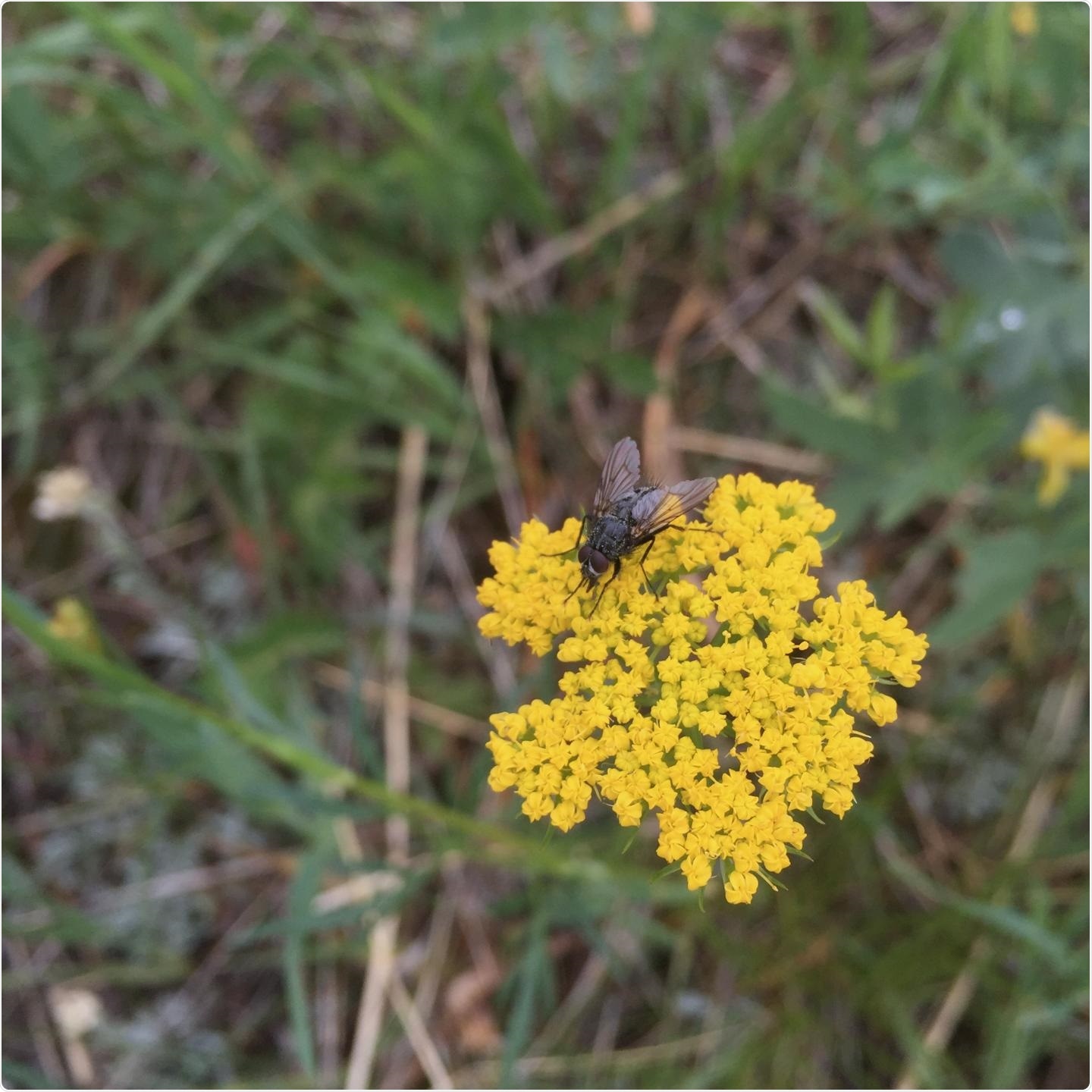The next time individuals go hiking, they are advised to take some moments to appreciate the apparently ordinary life all around them.

A fly visiting the flowers of alpine false spring parsley (Pseudocymopterus montanus). Image Credit: Julian Resasco.
According to a new study performed by the University of Colorado Boulder, a housefly and “generalist” plants and pollinators, including a humble yarrow weed, play an important role in preserving biodiversity and may even act as buffers against certain effects of climate change.
These latest findings, recently published in the Ecology journal, offer useful insights to prioritize the conservation of species that play a key role in the strength of ecological communities.
A lot of times, conservation efforts are geared toward things that are rare. But oftentimes, species that are common are also in decline and could go extinct, and that could have really big repercussions for maintaining biodiversity.”
Julian Resasco, Study Lead Author and Assistant Professor of Ecology, University of Colorado Boulder
The term “generalist” means a species that communicates with many different species, for instance, a bee that visits several different species of flowers, or rather, a flower that is visited by several species of bees and other pollinators added Resasco.
Bumblebees are familiar generalists and their cute and fuzzy bumbling bodies have attracted a great deal of interest over the years. However, the generalist pollinators have some unsung heroes, including an insect that is usually regarded with disdain—flies. Certain flies are the most common visitors to flowers and they tend to visit many different flowers, added Resasco.
Colorado residents may recognize specific generalist plants, such as mountain parsley (Pseudocymopterus montanus), which are composed of bunches of tiny yellow flowers, and also common yarrow (Achillea millefolium), which appears analogous but is generally white.
Such plants may not be the well-known, vividly colored specimens that are sought after by wildflower enthusiasts during summertime, but the new study has found that their role is crucial to the ecological stability of the meadows where the adored fireweed, columbine, and Indian paintbrush thrive.
For a long time, ecologists have analyzed the networks of interactions between pollinators and plants, and an earlier study has demonstrated that generalists can be found repeatedly across and within landscapes, and during warmer periods or across many years. According to the new analysis, generalists can persist and serve as anchors for their communities within seasons, across the landscape, and over the span of several years.
According to Resasco, since many species depend on generalists, a population of healthy generalists helps support a strong community of pollinators and plants that are less sensitive to local extinctions.
This kind of robustness may also be crucial for buffering against the growing inconsistent changes in the seasonal timing of species interaction caused by climate change, called a phenological mismatch.
In the last six years, Resasco has visited the same mountain meadow in the morning every week, between snowmelt in the month of May and the return of snowfall in the month of September, to watch beetles, flies, and bumblebees dance and jump between asters, roses, and daisies at six different marked lands.
This east-facing meadow, enclosed by aspen and spruce-fir forest, is nothing specifically unique. However, just below Niwot Ridge at 9,500 feet above sea level and close to the CU Boulder Mountain Research Station, Resasco counted a total of 267 different pollinator species that visited the flowers of 41 plant species—and a reassuringly healthy number of generalist plants.
Even Resasco, who is an experienced ecologist recently recognized as an early career fellow by the Ecological Society of America (ESA), was stunned by the biodiversity supported by this meadow. Resasco returned every year to the same site and began to observe more and more about the location.
Every year teaches you something different.”
Julian Resasco, Study Lead Author and Assistant Professor of Ecology, University of Colorado at Boulder
These findings teach people that what is common could be important to help the ecosystems manage future and current environmental change.
From leaving the local flies and flowers undisturbed to setting conservation priorities that guard the generalist plants, there are several ways to support such crucial but common species.
From late June to late July, such pollinators and plants will bloom and thrive in the backyards and close-by mountain meadows, awaiting hikers who are keen to watch them. However, hikers should not despair if Instagram-worthy columbines are not observed.
If you just take some time to stop and observe what’s around you, it’s always interesting. Don’t overlook the common generalists.”
Julian Resasco, Study Lead Author and Assistant Professor of Ecology, University of Colorado Boulder
Source:
Journal reference:
Resasco, J., et al. (2021) Plant–pollinator interactions between generalists persist over time and space. Ecology. doi.org/10.1002/ecy.3359.